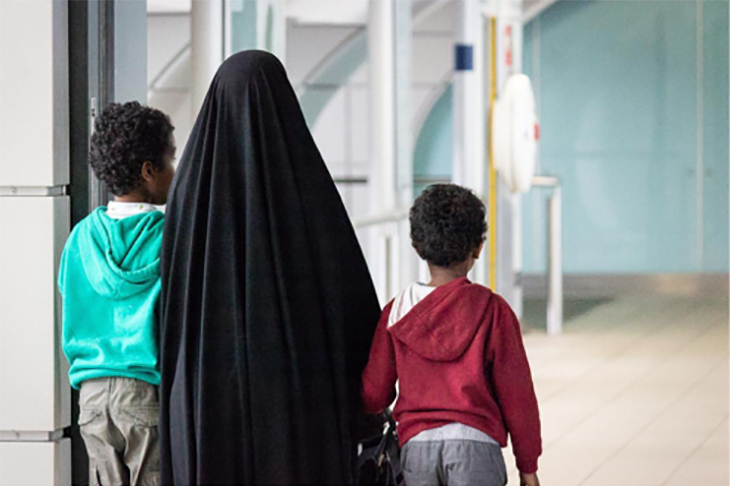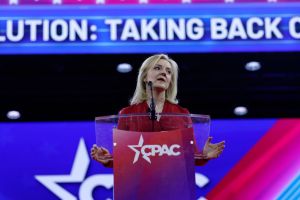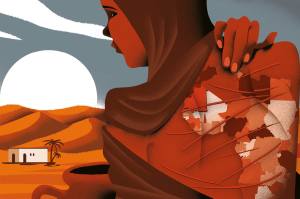‘I was segregated from non-Muslims from the beginning, not just physically, but also in terms of the core beliefs I had instilled in me,’ Sohail Ahmed tells me. He’s a soft-spoken 26-year-old student from East London who grew up in a fundamentalist Muslim community. In 2014, Sohail’s parents sent him to an Islamic exorcist in Newham because they believed his homosexuality was caused by a jinn, or spirit. The exorcisms didn’t work and his parents eventually kicked him out of the home. Sohail had previously contemplated a suicide attack in Canary Wharf to redeem himself.
I met Sohail while researching an article about Islam in Britain. This was eventually published in the Wall Street Journal on August 29. It was called ‘A Visit to Islamic England.’ The article briefly became a Twitter sensation, for the wrong reasons. I made a mistake, which was widely picked on. I described the existence of ‘alcohol restricted’ signs in Whitechapel, East London, and implied it was because of the heavy Muslim presence in the area. Such signs actually exist in various areas across the UK and have nothing to do with religious sensibilities.
Perhaps I was a little tone deaf to the realities of modern Britain. Perhaps I allowed my surprise at how fundamentally Islamified parts of the country have become to color my writing. Certainly, I failed to appreciate just what a sensitive subject I was writing about.
I began receiving hundreds (and then thousands) of messages and comments calling me a racist and ‘Islamophobe.’ ‘Someone airdrop @MrAndyNgo into a KKK rally,’ tweeted Rabia Chaudry, a New York Times bestselling Muslim-American writer. Mike Stuchbery, a British leftist social media commentator encouraged his 52,000 Twitter followers to ‘direct [their] ire’ at me. They obliged.
I had touched a nerve. Britain’s organized Islamist lobby also responded fiercely. This included the Muslim Council of Britain, an organization with links to the Jamaat-e-Islami, a radical Islamist party in Pakistan committed to the implementation of Shari’a. Members of the party recently protested across Pakistan over the acquittal of Asia Bibi, who was on death row for eight years over an accusation of blasphemy. CAGE, a British Muslim advocacy group that called Islamic State terrorist Mohammed Emwazi (aka ‘Jihadi John’) a ‘beautiful man’, dug through my social media history to pile on the outrage. American Muslim reformer, Asra Nomani calls this loose network of writers, politicians and activists, the ‘honor brigade.’ Motivated by a shame-based religious outlook, they cast vicious aspersions on anyone who criticizes Islamism.
Next came columns in a variety of publications. Alex Lockie, a news editor at Business Insider UK, denounced my writing as ‘cowardly’ and ‘race-baiting.’ The New Arab, a Qatari-owned media outlet, published three op-eds mocking and condemning my writing.
These vitriolic attacks all seized on my mistake over the sign as evidence of my prejudice against Muslims. In fact, I was just trying and perhaps sometimes failing to describe what I saw. I admit to having been surprised by quite how segregated some parts of Britain have become. I try not to make judgments about that, but what I believe to be true is that Britain’s multicultural policies have produced what the Nobel-prize winning economist Amartya Sen calls, ‘plural monoculturalism.’ That is, different communities, or monocultures, existing side-by-side with little to no interaction with one another.
This is the reality I witnessed and described in parts of Tower Hamlets, Waltham Forest, and Luton. Media commentators can refute it all they like, but I’ve spoken with many Britons and British Muslims from those areas who agree with my portrayals.
Plus, the data suggests it is a larger phenomenon across the UK. According to a 2016 survey by ICM Research for Channel 4, more than 50 percent of British Muslims live in areas that are at least 20 percent Muslim. Of that, around a fifth had not even entered the home of a non-Muslim in the past year.
I don’t fault the residents of these areas, many of whom are immigrants like my parents, for choosing to live in communities that are culturally familiar to them. I do fault the British state’s multicultural policies for unintentionally creating barriers to integration, and for leaving the most vulnerable (e.g. women, sexual, and religious minorities) trapped in structures of oppression. People like Sohail, for example.
‘My old Muslim friends said they fully supported my parents disowning me and cutting off familial ties,’ he says. Sohail has since become an atheist but still lives with the consequences of his former extremism. In 2016, he was denied entry into the US based on security concerns.
Sohail believes the segregated nature of the area his Pakistani family settled in the mid-Nineties made them vulnerable to indoctrination. One memory he has ingrained from childhood is community members rejoicing when 9/11 happened. And although dress is not a reliable measurement of extremism, Sohail recalls his mother going through a gradual sartorial transformation. She first adopted a hijab, then a jilbab (a full-length garment), and finally a niqab (face veil) and gloves. ‘If I didn’t live in a closed community,’ he says, ‘I would have felt more comfortable mentioning [the abuse] to mental health professionals, counselors, teachers, and social workers.’
Halima echoes some of Sohail’s experiences. She is an art student who hails from an Indian Muslim community in Blackburn, a heavily segregated town north of Manchester. ‘I had a good childhood until my period started,’ she says bluntly.
From birth, Halima lived in the shadow of her father, a deeply religious man who was esteemed in the community for being a hafiz, someone who memorized the Qur’an by heart. She was expected to maintain the family’s honor and reputation through wearing a headscarf, remaining chaste, and being pious. After she reached puberty, her family’s grasp tightened on her with the help of a watchful community. During high school, Halima says her mother used one of the school’s mentors as a secret informant. Her father began to regularly beat her.
At 14, state authorities finally intervened after Halima’s boyfriend called the police. According to the 2014 court hearing, her father beat her with a tennis racket and said he would kill her ‘before the community finds out [about her non-Muslim boyfriend].’ Her father was later convicted of child cruelty and given a suspended sentence. Halima alleges that the police officer who fingerprinted her belonged to the same ethno-religious community and actually worked with her uncle in taking her to her grandfather’s home, where she was further punished.
Today, Halima is estranged from her family and is in the process of legally changing her name. ‘It is a signifier of being my father’s possession.’ She says Britain’s fear of offending the religious is causing it to turn a blind eye to abuses happening from within. ‘I feel let down by mainstream British society, especially the authorities,’ she says. ‘If I was white my dad would’ve gotten prison time. [Society is] quite oblivious to what happens in spheres other than white middle class circles.’
Of course not all British Muslims come from such extreme communities. Many, like London’s own mayor Sadiq Khan, are testament to successful integration. This success is partly reflected in the data. ICM’s survey showed that a strong majority, 86 percent, of British Muslims feel a strong belonging to the UK. However, those facts cannot obscure the evidence that certain social chasms have simultaneously developed. The few surveys conducted on British Muslims show shockingly regressive attitudes on homosexuality, gender norms, and sex. A 2009 Gallup poll found zero percent of British Muslims believed homosexuality was ‘morally acceptable.’ ICM’s 2016 poll found that 52 percent believe homosexuality should be illegal in the country.
These beliefs have implications for other groups in a society. According to a 2018 survey by NatCen, Britain’s largest independent social research agency, Londoners are actually less tolerant of homosexuality and premarital sex than the rest of the country. How could this be so in one of the most modern, cosmopolitan and diverse cities on earth? The survey’s researchers attribute this to ‘religious differences’ — and surely London’s 12.4 percent Muslim community contributes to those, along with black Evangelicals and Eastern European Catholics.
Curiously, one of the religious tracts I received from a mosque during my visits faulted gay men for the excess of unmarried women. ‘New York alone has one million more females as compared to the number of males, and of the male population of New York one-third are gays i.e. sodomites,’ writes Zakir Naik, an Indian fundamentalist preacher. ‘The USA as a whole has more than 25 million gays.’ Naik was banned from entering the UK in 2010 but his tracts are readily available in mosques across the country.
I show Sohail the barrage of messages calling me a liar for my Wall Street Journal piece. He is surprised. ‘I walked with you through some of those areas you mentioned. What you said conforms with my own experiences in these areas. That’s all I can say.’
Andy Ngo is a subeditor at Quillette.


















